Key features of our digital experience monitoring tools
Digital experience monitoring (DEM) is the process of analyzing the efficacy of an organization's applications and services.
A DEM platform is a collection of monitoring tools that extends the application of traditional APM tools. With digital experience monitoring tools, organizations can proactively measure the performance and delivery of all their applications in real time, ensuring that every application or service is accessible, functional, nimble, and dynamic across all channels, including mobile, web, IoT, and APIs.
Proactively prevent issues with synthetic monitoring
Mimick real-user actions using scripted transactions to simulate user sessions and preemptively detect user issues. With a DEM software and synthetic monitoring you will be able to:
- Monitor the functionality of your application's critical transactions.
- Create an optimal standard for application performance and speed through simulated transactions and API monitoring
- Reduce risks of application malfunction
- Conduct application testing in pre-production stages
- Record and playback typical user journeys or actions from any locations of your choice to avoid issues and provide an incomparable digital experience for users
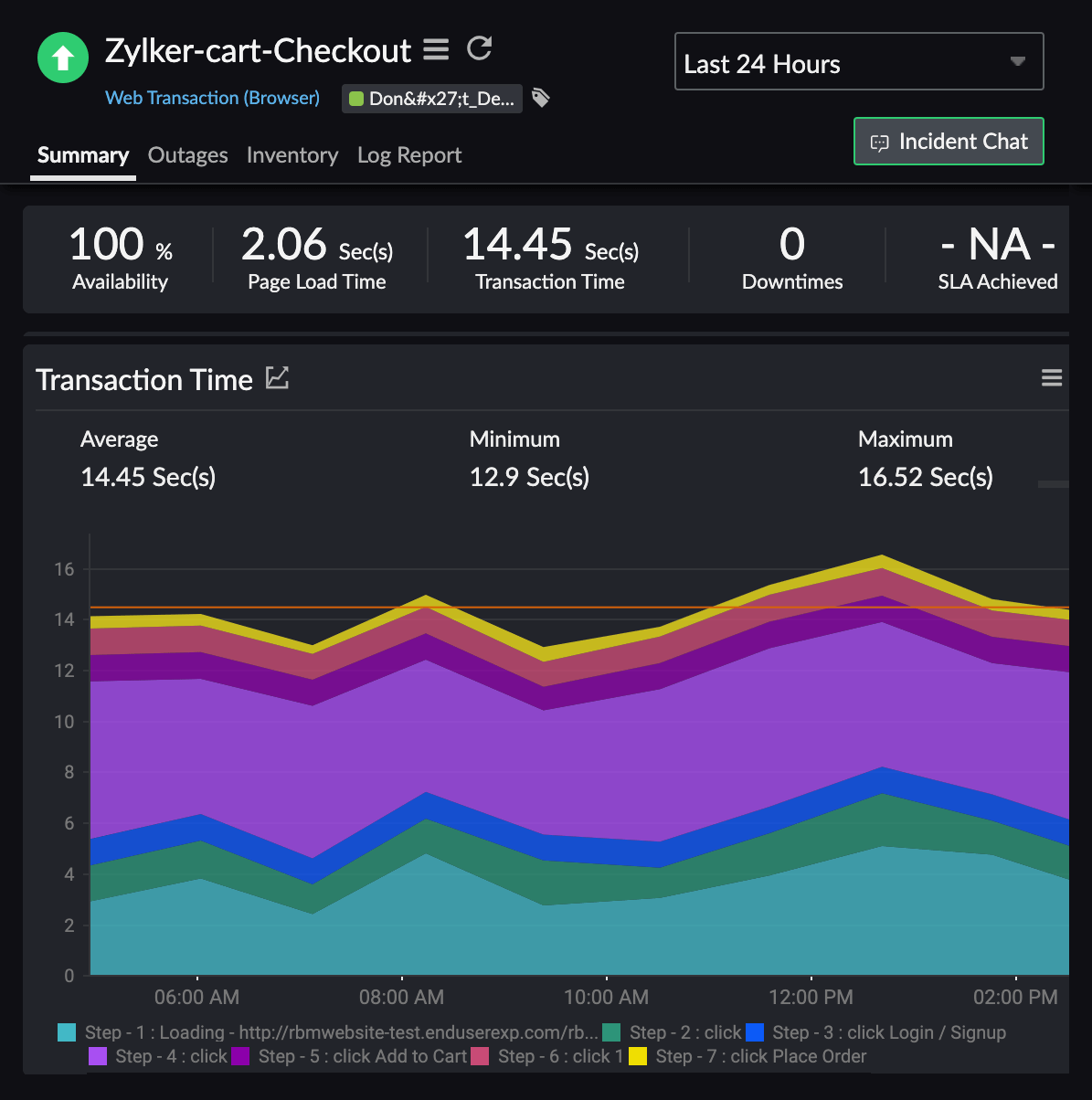
Enhance user experience with real user monitoring (RUM)
Track your website's performance and optimize your end-customer's user experience in real time. With RUM, you will be able to:
- Analyze live front-end performance as users go through your website from various geographies and ISPs
- Gain useful insights in to user sessions
- Capture and solve JavaScript errors quickly and track the status and performance of AJAX calls
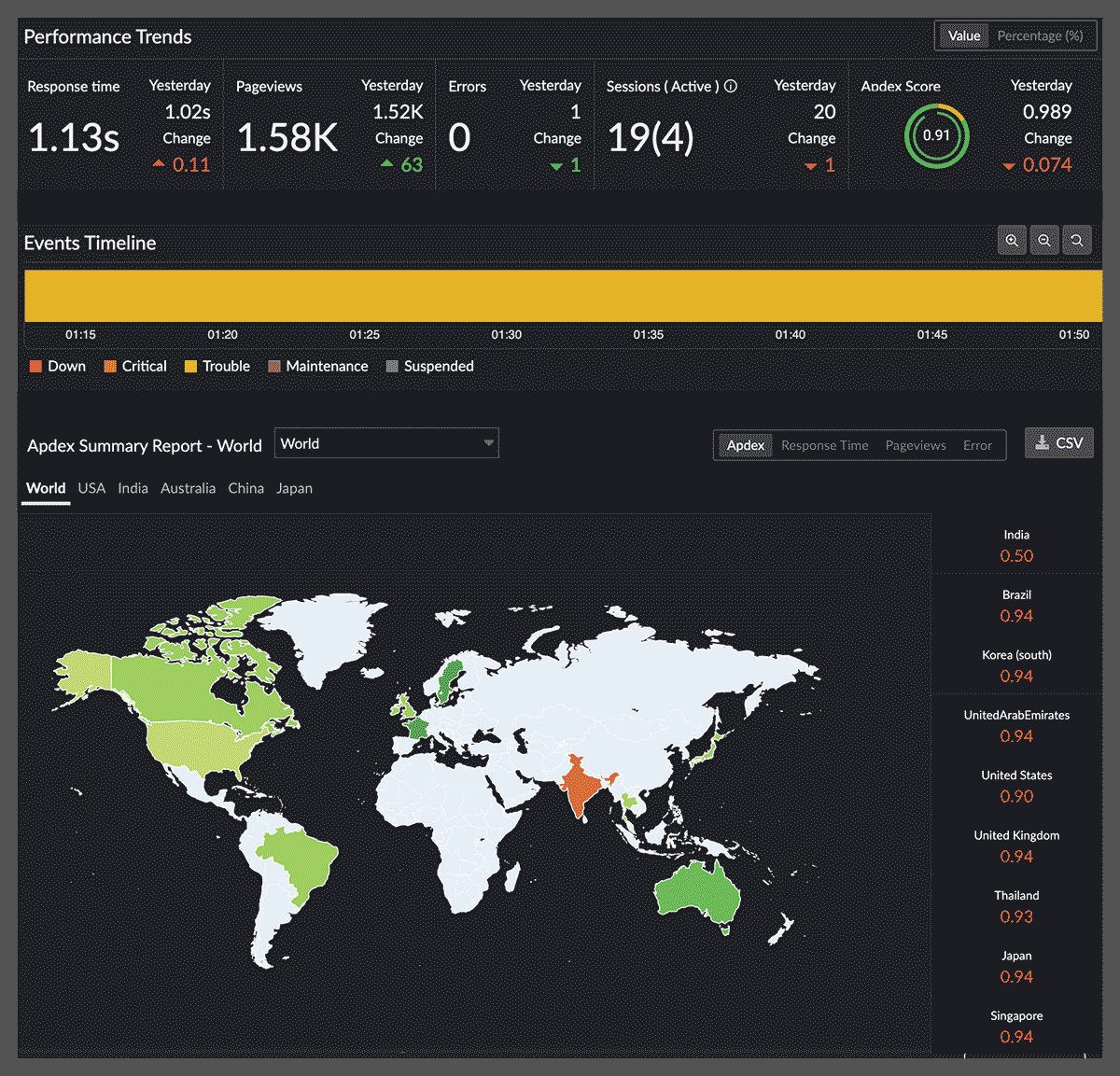
Augment your APM solution with a complete view of your application
Combine a DEM tool with our application performance monitoring (APM) tool to gain a comprehensive overview of the working of your application's front-end UX and back-end servers. By combining the two platforms you can gain several important insights such as:
- Detect issues such as application load times, slow SQL queries, connectivity issues, and overall performance in a high traffic application in real time
- Amplify visibility to the application from all perspectives. APM provides full visibility in to the backend servers, whereas DEM sheds light on how various services and resources are impacting your end users.
- Debug errors quickly and optimize app performance by monitoring background transactions regularly.
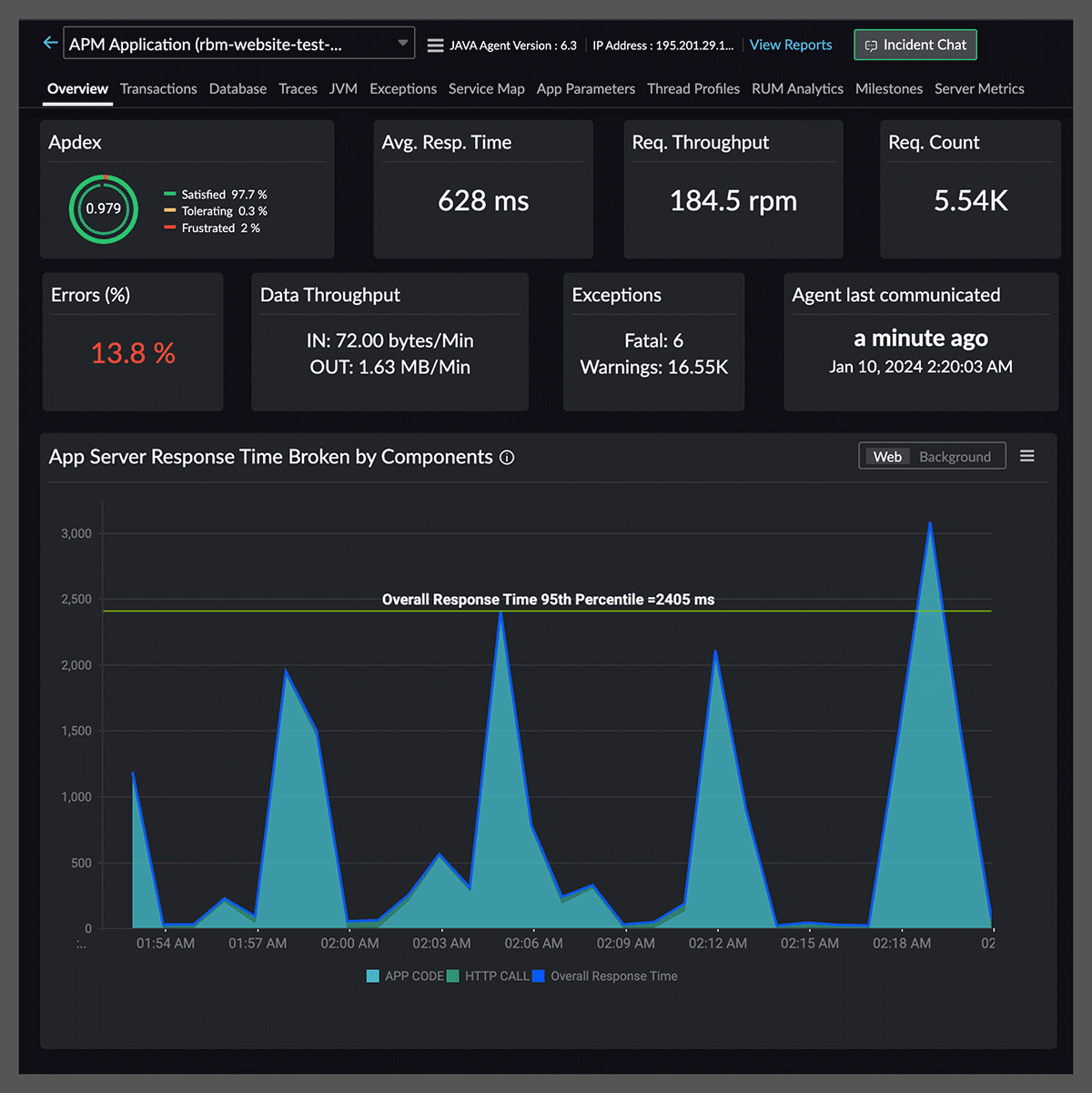
Boost your omni-channel strategy with mobile app monitoring
Monitor the performance of native mobile apps across various geographies, and customer segments to ensure that your app is up and running. Resolve performance issues on your mobile applications using crash analytics. With our DEM tools you can:
- Track and analyze crucial user-driven data like application downloads and installation, user sessions, and device information using mobile analytics
- Monitor your cloud stack using AWS and Azure services
- Capture errors and troubleshoot quickly to increase customer retention
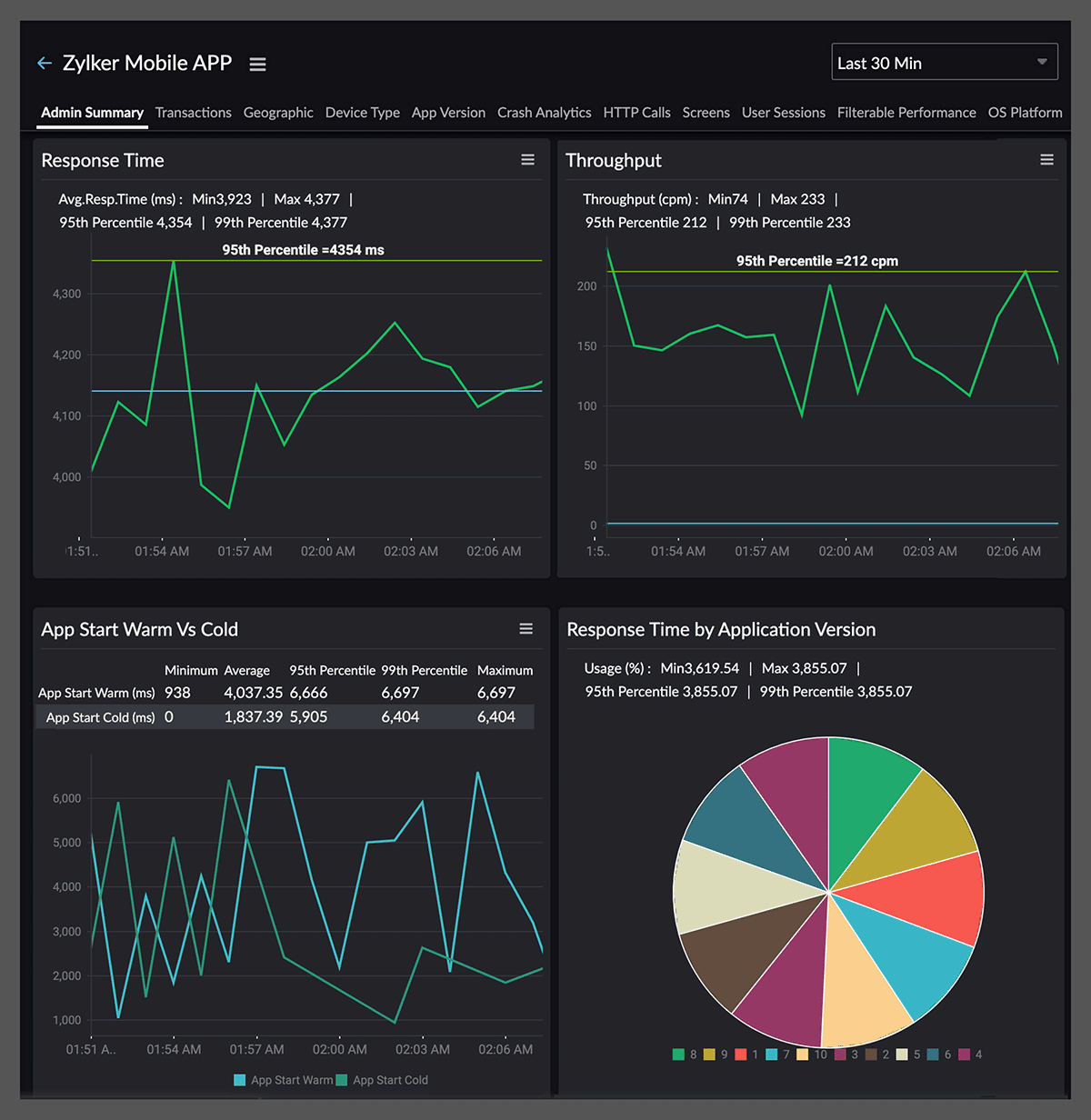
Enhance your customer experience with smart AIOps and observability
Our DEM platform covers the three pillars of observability and the power of AIOps to help you capture the most minute details and gives you useful insights that you can use to provide unparalleled customer experience. With our DEM platform you can:
- Identify issues with AI-powered alerts and gain automated insights to help you solve problems effectively
- Optimize user journeys to provide uninterrupted and smooth digital experience
- Lower operational costs by increasing efficiency
- Drive better business outcomes
- Detect anomalies or any unusual behavior in the application through machine learning and forecasting techniques
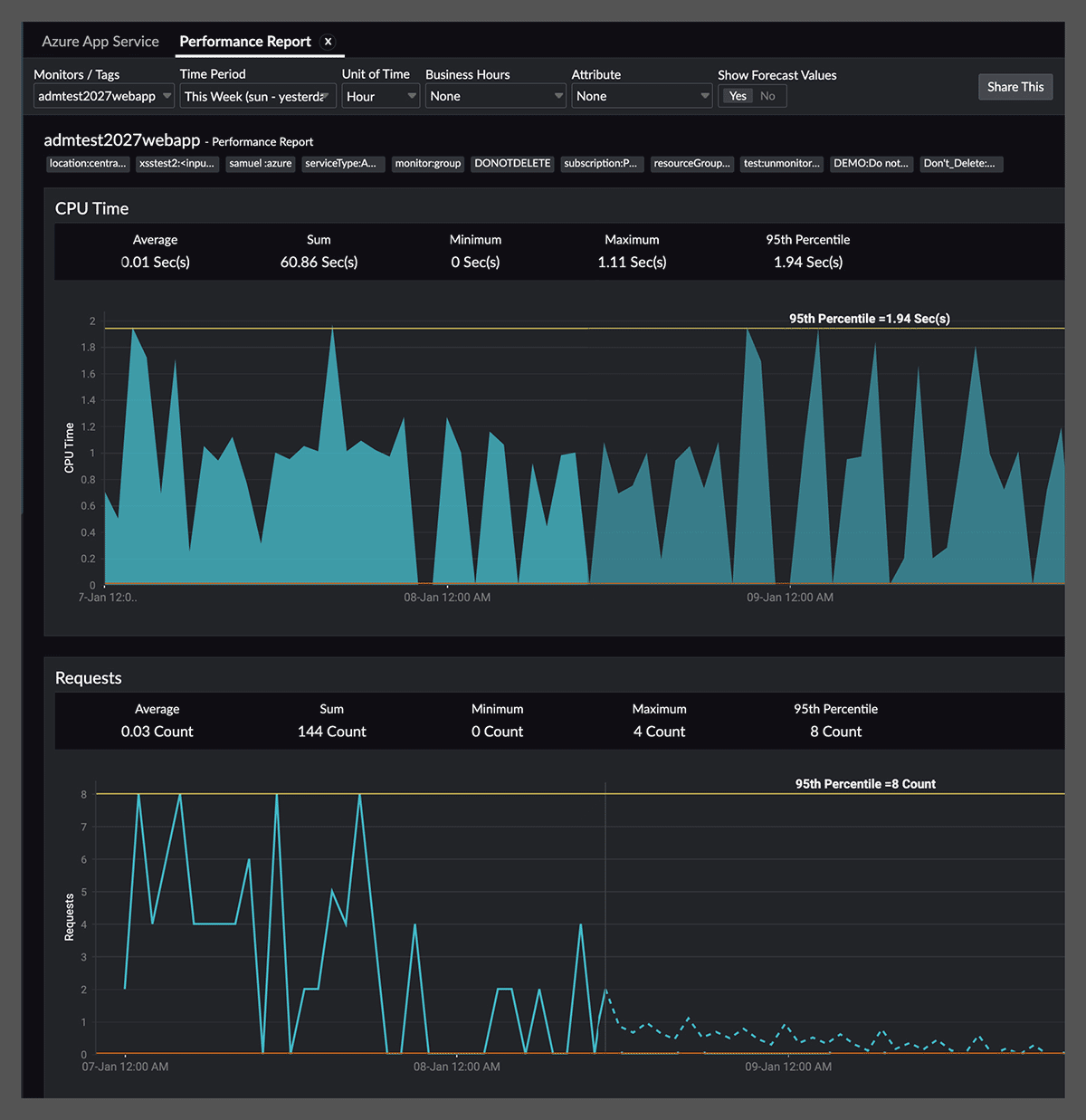
Resources
An overview of digital experience monitoring (DEM)
1. What is the digital experience?
The digital experience encompasses the entirety of users' interactions and impressions while engaging with digital platforms, services, or products. It includes every facet of the user journey, such as the ease of use, functionality, design, performance, and emotional resonance of digital interactions. Moreover, the digital experience extends beyond mere websites or applications, covering interactions with diverse digital touchpoints such as social media, emails, mobile apps, and online customer service. In today's digital-centric landscape, the digital experience plays a pivotal role in shaping user perceptions, fostering brand loyalty, and propelling business success.
2. What are some examples of digital experience?
In today's digital world, your interactions with brands extend far beyond physical stores. Every time you browse products online, navigate a website, or use a mobile app, you’re engaging in a digital experience. This can encompass everything from social media interactions and online learning platforms to customer service chats and virtual reality product exploration. From the moment you enter an e-commerce platform to the time you track your order delivery, each touchpoint shapes your perception of the brand. As technology continues to evolve, the possibilities for these digital experiences will only become richer and more immersive. The key for businesses lies in understanding that every digital interaction is an opportunity to build trust, loyalty, and a positive brand image.
3. What is digital experience monitoring (DEM)?
Digital experience monitoring (DEM) is a monitoring practice that offers visibility into the entire digital journey on your website or application and helps you obtain real-time insights on user experience, application performance, and customer satisfaction.
4. What does a digital experience monitoring (DEM) tool do?
A digital experience monitoring (DEM) tool analyzes the nuances related to user journeys or their experience on websites and web applications. The tool also helps IT teams resolve issues in the systems or services between end users and applications.
5. Why is digital experience monitoring important?
Digital experience monitoring offers in-depth insights into the experience of end users, proactively monitors performance, and identifies various issues that can cause problems. These insights help IT operation teams mitigate issues quickly, without interrupting the network. This provides an end-to-end picture.
6. How does digital experience monitoring work?
Digital experience monitoring tools gather and analyze metrics that can impact the user's digital experience. This data can vary from user behavior on the site, the application performance, traffic to the website, hardware usage, location-based variations, and much more. The data is gathered on dashboards that IT teams can use for further analysis of user experience on the site, issue resolution, and even predicting patterns that can repeat in the future.
7. What are the challenges of digital experience monitoring (DEM)?
By following these steps, you can establish a comprehensive DEM strategy that not only identifies and resolves issues promptly but also contributes to the continuous improvement of your digital services and user satisfaction.
- The necessity to scale up to monitor all the digital touchpoints.
- Lack of a complete action plan or process that will help in quick issue assessment and resolution.
- Not using digital experience monitoring tools internally, thereby affecting productivity and employee performance.
- Lack of real-time assessment.
8. How do you create an effective digital experience monitoring strategy?
By following these steps, you can establish a comprehensive DEM strategy that not only identifies and resolves issues promptly but also contributes to the continuous improvement of your digital services and user satisfaction.
- Define objectives and key performance indicators (KPIs).
- Select efficient monitoring tools.
- Assess and understand user journeys.
- Implement real user monitoring (RUM) to capture real-time user experience data.
- Set up synthetic monitoring to simulate user interactions and identify potential issues.
- Monitor third-party services.
- Establish performance baselines and define thresholds for key metrics.
- Implement cross-browser and device testing.
- Collect direct end-user feedback.
- Create incident response and resolution procedures.
- Collaborate across IT, development, and business teams to implement a holistic approach.
- Regularly review and update the strategy.
9. What are the types of DEM tools?
DEM relies on a variety of tools to comprehensively assess and enhance the user experience across digital services. These tools cover various aspects of performance, user behavior, and application functionality. Here are some key types of DEM tools:
Real user monitoring (RUM)
Captures and analyzes data from actual user interactions with applications and websites in real time, then provides insights into user experience, user behavior, and performance bottlenecks.
Synthetic monitoring
Simulates user interactions and transactions to test proactively and monitor application performance under various conditions and potential issues before they impact real users and establish performance benchmarks.
Application performance monitoring (APM)
Monitors the performance of applications—including metrics like response times, latency, error rates, and resource usage—and helps to identify and resolve performance issues within the application infrastructure.
Network performance monitoring
Evaluates the performance and reliability of network infrastructure, assesses data transfer and connectivity, and ensures optimal communication between users and applications.
End-user experience monitoring (EUEM)
Focuses on monitoring the overall end-user experience by combining elements of RUM, synthetic monitoring, and APM and offers a holistic view of how end users interact with digital services.
Incident management and collaboration tools
Facilitates communication, collaboration, and incident response across teams and streamlines the resolution process for identified performance issues.
10. What are the benefits of digital experience monitoring solutions?
By using a digital experience monitoring solution, you can ensure:
Enhanced user experience
By tracking and providing details on each user interaction with the digital platforms, a digital experience monitoring solution will help the site owners to fine-tune the performance of their platforms by removing all hiccups. Moreover, improvements in key metrics such as application response times, page load speeds, or other site/application-related performance details can help improve and optimize the user experience, thereby leading to increased user satisfaction and engagement.
Better visibility into the IT environment
A digital experience monitoring solution is a data-driven approach and the myriad of data it collects can help organizations in strategic decision-making, as well as in ensuring optimal resource allocation. The data can also help to discover trends, identify patterns, and trace out areas of improvement to prioritize.
Reduced MTTR and quick issue resolution
With the enhanced visibility into issues or bottlenecks, like latency-related details, issues affecting the server performance or application errors, IT teams can quickly filter out and resolve issues, and reduce the mean time to repair (MTTR). Moreover, with proactive monitoring and real-time notifications, teams can also ensure end users stay updated and avoid business disruptions.
Increase in business potential
Enhanced customer satisfaction can be ensured with an uninterrupted digital experience. When coupled with efficient issue resolution measures and high operational efficiency, business performance can see a boost.